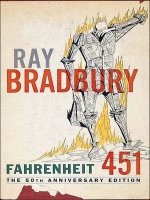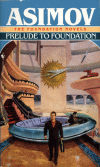It has been almost 4 years since the movie I, Robot (2004) was released. I was terribly disappointed that the Hollywood movie was barely anything like the book of short stories that I remembered reading, which I explained in my review. After browsing the Internet looking for other reactions I discovered that a screenplay written by Harlan Ellison had received a glowing review from Isaac Asimov.
–edit– 4-16-2008
I just ran across this interesting NPR story from 2004 that talks about the fan reaction to the original I, Robot movie. There are a few comments from Harlan Ellison and Irving Kirchner, director of The Empire Strikes Back, as one the prospective directors. The audio story is available in Real Media and Windows Media Player formats.
–edit–
The Illustrated Screenplay is preceded by a letter from Asimov detailing his thoughts about how none of his science fiction had made it to the silver screen. He points out that he wrote the novelization for Fantastic Voyage was based on a script that took so long to finish filming that the book came out six months before the movie. I always enjoy reading Asimov’s commentary on other people’s work, especially in the Robot City series.
Next, Harlan Ellison gives us a brief background of the history behind the events surrounding the script for I, Robot that was never made into a movie. Ellison writes this with a very frank manner which I found intriguing. He made me feel the disgust that he felt after the script was finally shelved. After reading the script my feelings were even stronger.
This script succeeded in doing what the 2004 version failed to do, stay true to Isaac Asimov’s vision. Asimov identified four stories that Ellison incorporated into this screenplay, but I’ve identified five; Robbie, Runaround, Liar!, Evidence, and The Evitable Conflict. Several of these stories are covered almost exactly, while others are modified to insert Susan Calvin into them as she is the main focus of the screenplay.
I was pleased to see that Calvin was much as Asimov envisioned, not the sexy Bridget Moynahan that Hollywood insisted on. If I want to watch an action movie with a hot actress, there are plenty others to choose from. While a majority of the elements come directly from Asimov’s writing, there are many aspects to this screenplay that are unique. The main two differences are that there are aliens allied with humans in a Galactic Federation and teleportation is the primary mode of space travel.
This screenplay is not a fluffed up and full of action, but an adult oriented Sci-Fi drama. There are adult themes and situations, philosophical discussions, and harsh language. This movie would probably get by with a PG-13 rating today, but would likely have been rated R because of a few scenes back in 1978 when it was finalized. This was a truly enjoyable read, and any fan of Isaac Asimov should make it a point to read it.


I find it interesting that many people moan about a project as being a piece of garbage, but they still manage to make a half billion dollars at the box office. The general public are not extremely intelligent, for if they were a fantastic screenplay like Ellison’s would find favor at the studios and be greenlit. If you want to view films based on great speculative fiction, don’t look to Columbia, Paramount et al. Most of these companies are run by agents putting together package deals. Luckily they haven’t jumped on a great novel like Stranger in a Strange Land. I hear Universal has Justin Beiber in mind for Valentine Micheal Smith!